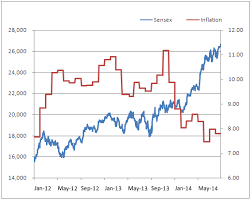Inflation: a general increase in prices and fall in the purchasing value of money.
cost push inflation: increased price of raw materials final product causes product cost high.
Demand-Pull inflation: increased demand of product causes increase in product price.
Deflation: decrease in the general level of prices in an economy. deflation can turn a recession into a depression. reasons housing 2008,1992
Creeping mild Inflation
3 percent a year or less
Walking Inflation
between 3-10 percent a year. economy growing fast
buy more than they need, just to avoid tomorrow’s much higher prices
Galloping Inflation
inflation rises to 10 percent or more
Hyperinflation
than 50 percent a month. It is very rare.
money printed got in war situations, Zimbabwe 2000, 2010 Venezuela
Stagflation
price increase without demand
Core Inflation
except for food & energy
deflation
wage inflation: more than the cost of living
asset inflation: house/gold/food/oil/gas
political uncertainty in the oil-exporting countries
inflation vs deflation
inflation vs recession vs depression
recession: two (2) consecutive quarters of declines in quarterly real (inflation adjusted) gross domestic product (GDP)
depression: A depression lasts for years, occured once in 1935, 10 years took for recovery
inflation and interest rates relationship
Higher interest rates reduce inflation whereas lower interest rates lead to a rise in inflation.
interest rates should be higher than inflation rates, otherwise people remove savings From fixed deposits.

inflation rate and stock market Warren Buffett
inflation low= stock market investments and price increases due to lower interest rate in banks.
inflation high: stock market goes down, due to higher interest rates and risk free return closer to stocks.
federal bank or rbi increases interest rates to control inflation, prints money to recover from recession.
what is the relationship between inflation and economic growth
rapid economic growth tends to cause upward pressure on prices and wages – leading to a higher inflation rate.
inflation risk
SAVING = INCOME – EXPENSES
What can you do with your saving?
Hold as cash/deposit in savings bank account (Retain the Saving)
OR
Invest the Saving (Deploy the saving in physical or financial products with a view to gain a return on your investment)
What happens to the Saving that remains uninvested?
Inflation eats the Uninvested Saving
inflation risk represents the risk that the money received on an investment may be worthless when adjusted for inflation.
Inflation risk is also known as purchasing power risk.
Eg. On 1st Jan 2016, Asha had Rs 8 Lacs. She invested this money in a 6% Bank FD for 1 year. So she will be getting Rs 8.48 Lacs* on 31st Dec 2016.
The general rise in prices in India was 7% over the same time period.
This means that what Asha could buy with Rs 8 Lacs on Jan 1, 2016, she will need Rs 8.56 Lacs for the same purchase on 31st Dec 2016.
But her investment has yielded her Rs 8.48 lacs only.
This has happened because her investment was exposed to inflation risk. Her purchasing power has decreased.
*Assuming no compounding
inflation risk is highest in fixed return instruments, such as bonds, deposits, and debentures.
This can be explained with the concept of Real Rate of Return
The return from the investment is the Nominal Rate.
Real Rate of Return = Nominal Rate – Inflation Rate
For Eg. Coupon of a Bond is 8% (Nominal Rate)
When the
Rate of Inflation is 7%, The Real Rate of Return is 1%
Rate of Inflation is 8%, The Real Rate of Return is 0
Rate of Inflation is 9%, The Real Rate of Return is -1%
The Nominal Rate is always +ve. But the Real Rate of Return can be +ve,0 or even -ve.
Effective Real Rate of Return
When the Real Rate of Return is adjusted to include the impact of Time Value of Money, it is called Effective Real Rate of Return
If an investment earns a nominal rate of return, that is the rate at which money is being compounded. However, if inflation reduces the value of those investment cash flows, the value of those returns is discounted by the rate of inflation
Effective Real Rate of Return =
((1 + Nominal Rate) / (1+ Inflation Rate)) – 1
So, if the coupon of the bond is 8% and Rate of Inflation is 6%Effective Real Rate of Return = ((1.08) / (1.06)) – 1 = 1.89%
How much would be the expense, if it were incurred today?
A = P X (1 + i)^n
A = Rupee requirement in future or Future value
P = Cost in today’s terms
i = inflation,
n = Number of years into the future when the expense will be incurred.
Mr. A wants to plan for his child’s education. Assuming that he wants his child to be a doctor. Let’s assume that the current expenditure of medical education is Rs. 15,00,000. His child is 3 years old and would require fees when he is 18 years. Find out the expenditure required at the child is 18 years old.
P = 15,00,000
N = 15 years (18 -3)
I = 8% ( It is inflation rate – Assumed)
A = 1500000*(1.08)^15 = Rs. 47,58,253
^ symbol meaning in maths raised to a power.
For example, 4^3 = 4 to the 3rd power = 4 x 4 x 4 = 64
present value is, P = A / (1+R) ^ N (R is return expected)
Future value is, A= P*(1+ I)^ N (A = is future value, P is present value, I is inflation and N is
term)